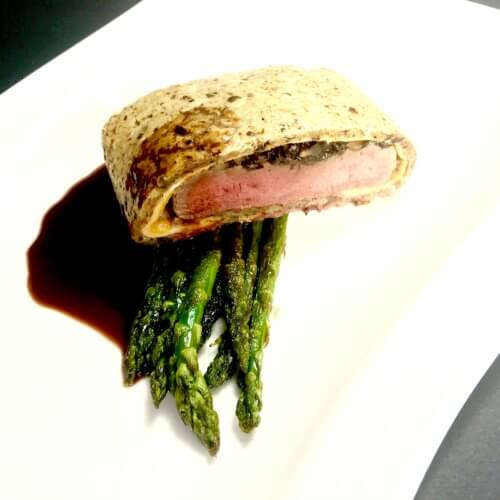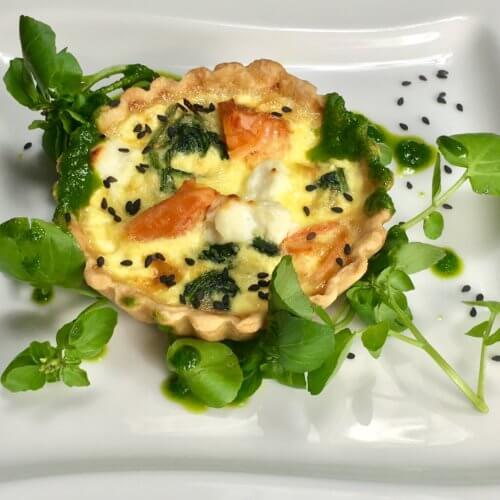Rough Puff Pastry
Puff pastry may be delicious, but it’s not the sort of thing most people would make at home. That’s where rough puff pastry comes in. It’s much easier than the traditional method, but produces very similar results.
People regularly overestimate the hassle and underestimate the benefits of home cooking. Rough puff pastry is the sort of shortcut that can help tip the balance.
Ingredients
125g strong/bread plain flour
1/2 tsp salt
125g unsalted butter
50ml water
- Start with the butter: use straight from the fridge and soften it by beating with a rolling pin between two sheets of baking paper until pliable.
- Slice into cubes, then get ready to combine it with the flour in a bowl.
- Add the salt.
- Rub the flour and butter between your fingertips, combining them a little bit at a time.
- Make sure you keep dredging up the flour from the bottom of the bowl and break up the largest chunks of butter until it resembles a bowl of breadcrumbs with a few larger bits.
- Add the water incrementally and bring it together with a dough scraper.
- Keep mixing gently until the dough is firm and cohesive.
- We recommend pushing it against the side of the bowl to test how well it sticks together. If you’re encountering lots of dry, floury patches then feel free to add a little extra water.
- Flakes or specks of butter in the dough are a good sign.
- Flatten and wrap in baking parchment and chill for at least thirty minutes.
- The pastry needs to rolled out until it’s length is three times its width.
- A little bit of cracking at the edges is nothing to worry about. Just push it together and continue.
- Aim for a smooth rectangular shape.
- Remove the top sheet of parchment and double fold (see video).
- Turn ninety degrees and repeat this process twice.
- Wrap it up and leave in the fridge.
- Chill for least an hour (ideally overnight) to make sure everything has set completely.
- To bake, preheat the oven 200C
- Glaze the top (but not the sides, otherwise the layers might stick) with a beaten egg.
- It might be worth chilling the pastry again before baking. If it spends a long time out of the fridge during prep, the butter can melt and ooze out of the pastry.
- Bake for roughly 20-25 minutes, or until the pastry has risen and turned a deep golden brown on top (precise times will vary depending on filling etc.).
- Firm sides are another indicator that the pastry is properly cooked (it may also be worth checking that the bottom of the pastry is not soggy).



